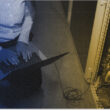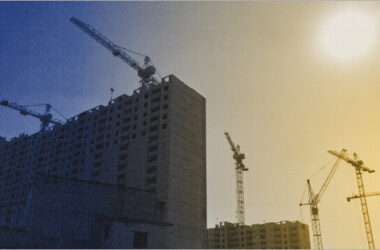An Erection All Risk Policy provides coverage for the erection and installation of machinery, plant, and equipment. It is designed to protect the policyholder against any loss or damage that may occur during the erection process, including damage caused by fire, theft, or natural disasters.
EAR Policies are typically taken out by contractors and construction companies who are responsible for the erection and installation of equipment. The policy covers all risks associated with the erection process, including damage to the equipment itself, as well as any damage caused to third-party property or injury to third parties. In addition, erection all risk policies can also cover any loss of income resulting from delays in the erection process.
It provides comprehensive coverage for the risks associated with the erection and installation of equipment. By taking out this type of policy, contractors and construction companies can protect themselves against any unforeseen events that may occur during the erection process, giving them peace of mind and allowing them to focus on completing the project at hand.
Scope of Erection All Risk Policy
The scope of coverage provided by an EAR Policy can vary depending on the specific terms and conditions of the policy. However, most policies typically provide coverage for the following:
- Physical damage to the project during the construction or installation process.
- Damage or loss caused by natural disasters, such as earthquakes, hurricanes, or floods.
- Damage or loss caused by accidents or other unforeseen events that may occur during the project.
- Liability coverage for injuries or damages that may occur to third parties during the construction or installation process.
It is important to note that the scope of coverage provided by an EAR Insurance can be tailored to meet the specific needs of the project. This can include additional coverage for specific risks or exclusions for certain types of risks.
Key Features of Erection All Risk Policy
An Erection All Risk Policy (EAR) provides coverage for any loss or damage to a construction project during the erection and installation process. Here are some key features of an EAR Insurance:
Policy Tenure
EAR policies are typically issued for the duration of the construction project, which can range from a few months to a few years. The policy can be extended if the project takes longer than expected to complete. The policy can also be cancelled if the project is abandoned or completed ahead of schedule.
Sum Insured
The sum insured for an EAR Insurance is usually based on the total value of the project, including the cost of materials, labor, and equipment. The sum insured should be sufficient to cover the entire project, including any additional costs that may arise due to delays or other unexpected events.
Premium Calculation
The premium for an EAR Insurance is calculated based on several factors, including the sum insured, the duration of the project, the type of construction, and the risk factors involved. The premium can be paid in instalments or as a lump sum at the beginning of the policy period.
EAR policies typically cover a wide range of risks, including damage to the construction site, loss or damage to materials and equipment, and liability for third-party injuries or property damage. It is important to read the policy documents carefully to understand the specific coverage and exclusions.
Risks Covered Under Erection All Risk Policy
An erection all risk (EAR) policy is designed to cover the risks associated with the installation and erection of machinery, plant, and equipment. This policy provides comprehensive coverage against various risks that could arise during erection work. The policy covers material damage, third-party liability, and natural calamities.
Material Damage
Material damage is one of the most common risks covered under an EAR Insurance. This includes any damage to the property being erected, as well as any damage to the surrounding property. The policy covers damage caused by accidents, fire, theft, and other unforeseen events. The policy also covers damage caused by faulty design, faulty materials, and faulty workmanship.
Third-Party Liability
An EAR Insurance also covers third-party liability. This includes any damage caused to third-party property or any injury caused to a third-party during erection work. The policy covers legal liabilities arising out of such incidents, including the cost of defending any legal action taken against the insured.
Natural Calamities
An EAR Insurance also covers natural calamities such as earthquakes, floods, and storms. This coverage is particularly important in areas that are prone to such events. The policy covers any damage caused to the property being erected as well as any damage caused to the surrounding property.
Exclusions in Erection All Risk Policy
An erection all risk policy provides comprehensive coverage against the risks associated with the erection, testing, and commissioning of machinery and equipment. However, like any other insurance policy, there are certain exclusions that policyholders need to be aware of. This section highlights some of the common exclusions in an erection all risk policy.
Consequential Losses
An erection all risk policy does not cover consequential losses that arise due to delay or interruption of the project. This includes losses due to loss of profits, loss of use, or any other indirect or consequential loss. It is important that policyholders understand that this exclusion applies to any loss that is not directly caused by physical damage to the insured property.
Willful Acts or Negligence
Any loss or damage arising due to willful acts or negligence of the policyholder, or their employees is excluded from coverage under an erection all risk policy. This includes any damage caused due to improper handling, installation, or maintenance of the insured property. It is essential that policyholders take adequate precautions to prevent any damage to the insured property and avoid any wilful or negligent acts that could lead to a claim being denied.
In conclusion, while an erection all risk policy provides comprehensive coverage against most risks associated with the erection, testing, and commissioning of machinery and equipment, policyholders need to be aware of the exclusions that apply. It is important that policyholders carefully read and understand the policy terms and conditions to ensure that they have adequate coverage and avoid any surprises in the event of a claim.
Claims Process for Erection All Risk Policy
When an insured event occurs, the policyholder must notify the insurer as soon as possible. The claims process for an erection all risk policy is designed to ensure that the policyholder receives prompt and fair compensation for any losses incurred during the erection or installation of machinery, equipment, or structures.
Notification of Loss
The policyholder must notify the insurer immediately in writing or by phone. The notification should include the policy number, the date and time of the loss, the location of the loss, and a brief description of the loss. The policyholder should also take all reasonable steps to mitigate the loss and prevent further damage.
Documentation Required
The insurer will require the policyholder to provide documentation to support the claim. This may include invoices, receipts, photographs, plans, and specifications. The insurer may also require the policyholder to provide a written statement outlining the circumstances of the loss.
Assessment and Settlement
Once the insurer has received all the necessary documentation, they will assess the claim and determine the amount of compensation to be paid. The insurer will consider the policyholder’s deductible and any exclusions or limitations in the policy.
If the insurer accepts the claim, they will make a settlement offer to the policyholder. The policyholder may accept the offer or negotiate a higher settlement. If the insurer rejects the claim, they will provide a written explanation of their decision.
In conclusion, the claims process for an erection all risk policy is straightforward and designed to ensure that the policyholder receives prompt and fair compensation. By following the notification and documentation requirements, the policyholder can help to ensure a smooth and efficient claims process.
Additional Covers in Erection All Risk Policy
An erection all risk policy (EAR) is a comprehensive insurance policy that covers all risks associated with the erection and installation of machinery, plants, and equipment. In addition to the basic coverage, an EAR policy can also offer additional covers to provide further protection to the policyholder.
Maintenance Cover
Maintenance cover is an additional cover that can be included in an EAR policy. This cover provides protection against any accidental damage that occurs during the maintenance or repair of the equipment. This cover is especially useful for equipment that requires regular maintenance or repairs.
With maintenance cover, the policyholder can claim for any damage caused during the maintenance or repair of the equipment, including any damage to the equipment itself or any third-party property. The policyholder can also claim for any loss of income resulting from the damage.
Terrorism Cover
Terrorism cover is another additional cover that can be included in an EAR policy. This cover provides protection against any damage or loss caused by acts of terrorism. Terrorism cover is important for equipment that is installed in high-risk areas or regions that are prone to terrorist attacks.
With terrorism cover, the policyholder can claim for any damage caused by acts of terrorism, including any damage to the equipment itself or any third-party property. The policyholder can also claim for any loss of income resulting from the damage.
In conclusion, an EAR policy can offer additional covers to provide further protection to the policyholder. Maintenance cover and terrorism cover are two examples of additional covers that can be included in an EAR policy. It is important to discuss the available options with the insurance provider to ensure that the policy provides adequate coverage for the equipment.
Policy Endorsements and Adjustments
An Erection All Risk Insurance is a comprehensive insurance policy that provides coverage for damage or loss to property during the erection or installation process. The policy can be customized with additional endorsements and adjustments to meet the specific needs of the policyholder.
Endorsements are additions to the policy that provide additional coverage for specific risks not covered by the standard policy. For example, a policyholder may choose to add an endorsement for earthquake coverage if they are working in an area prone to earthquakes. Endorsements can also be added to cover loss or damage to specific equipment or machinery.
Adjustments to the policy can be made to change the coverage limits or deductibles. This can be useful if the policyholder’s needs change during the project. For example, if the project is delayed and the equipment is left on-site for an extended period, the policyholder may need to increase the coverage limit to account for the increased risk of theft or damage.
It is important for policyholders to review their policy regularly and make any necessary adjustments or endorsements to ensure that they have adequate coverage for their specific needs. Failure to do so could result in gaps in coverage or inadequate protection in the event of a loss.
Policyholders should work with their insurance agent or broker to determine the appropriate endorsements and adjustments for their policy. The agent or broker can provide guidance and advice based on the policyholder’s specific needs and circumstances.
In conclusion, policy endorsements and adjustments are important tools that policyholders can use to customize their Erection All Risk Insurance to meet their specific needs. By working with their insurance agent or broker and regularly reviewing their policy, policyholders can ensure that they have the appropriate coverage in place to protect their property and assets.
Legal and Regulatory Considerations
When considering an Erection All Risk Insurance, it is essential to understand the legal and regulatory considerations involved. The policy must comply with the applicable laws and regulations of the jurisdiction where it is being issued.
In most countries, the insurance industry is regulated by the government to protect the interests of policyholders. Therefore, the policy must meet the requirements of the regulatory body. The policy must also follow the local laws and regulations that govern the construction and erection of buildings and structures.
In addition to complying with the regulatory requirements, it is also essential to ensure that the policy is legally enforceable. The policy must be written in clear and unambiguous terms that are easy to understand for both the insurer and the insured. The policy should also clearly state the responsibilities and obligations of both parties.
It is also important to note that the policy may be subject to judicial interpretation in the event of a dispute. Therefore, it is crucial to ensure that the policy is drafted in a manner that is consistent with the legal principles of the jurisdiction where it is being issued.
Comparing Erection All Risk Policy with Other Policies
EAR policy vs. Contractors All Risk (CAR) policy
EAR policy and CAR policy are both designed to cover construction projects from risks such as fire, theft, and natural disasters. However, EAR policy is more comprehensive as it covers risks related to the installation and testing of machinery and equipment. CAR policy, on the other hand, only covers risks related to the construction phase of the project.
EAR policy vs. Property All Risk (PAR) policy
PAR policy is designed to cover risks related to property damage such as fire, theft, and natural disasters. While EAR policy also covers these risks, it is more focused on risks related to the installation and testing of machinery and equipment. Therefore, EAR policy is more suitable for construction projects that involve the installation of machinery and equipment.
EAR policy vs. Third-Party Liability (TPL) policy
TPL policy is designed to cover damages or injuries caused to third parties during the construction project. EAR policy, on the other hand, covers risks related to the installation and testing of machinery and equipment. While both policies are important for construction projects, they cover different types of risks and are not interchangeable.
In conclusion, EAR policy is a comprehensive insurance policy that covers risks related to the installation and testing of machinery and equipment. It is important to understand how it compares to other policies before deciding on which policy to choose for a construction project.
Choosing the Right Erection All Risk Policy
When it comes to choosing the right Erection All Risk Insurance, there are a few factors to consider ensuring that you get the best coverage for your needs. Here are some tips to help you make an informed decision:
Assess Your Risks
Before you start shopping for an Erection All Risk Insurance, it’s important to assess your risks. This means identifying the potential risks that could affect your project, such as natural disasters, theft, or damage during transportation. Once you have a clear understanding of your risks, you can choose a policy that provides adequate coverage.
Compare Policies
When comparing erection all risk policies, it’s important to look beyond the price tag. Consider the coverage limits, exclusions, and deductibles of each policy to determine which one offers the best value for your needs. You may also want to consider the reputation of the insurer and their claims process.
Understand the Exclusions
All policies have exclusions, which are specific situations that are not covered by the policy. It’s important to carefully review the exclusions of any Erection All Risk Policy you are considering ensuring that it covers the risks that are most relevant to your project. Common exclusions include wear and tear, faulty design, and intentional damage.
Work with BimaKavach
Choosing the right Erection All Risk Insurance can be a complex process, especially if you are not familiar with the insurance industry. Submit your details, BimaKavach experts will help you get the most suited product from top insurer.
Case Studies and Practical Examples
Erection All Risk Insurance provides coverage for any damage or loss that occurs during the erection or installation of machinery, plants, or equipment. Here are a few practical examples of how Erection All Risk Insurance has helped businesses in the past:
- A construction company was tasked with erecting a large steel structure for a client. During the installation, a gust of wind knocked over a crane, causing significant damage to the structure. Thanks to their Erection All Risk Policy, the construction company was able to file a claim and receive compensation for the damages.
- A power plant was undergoing maintenance when a fire broke out, damaging several pieces of equipment. The plant had an Erection All Risk Policy in place, which covered the cost of repairs and replacements.
- A manufacturing company was installing a new production line when a faulty piece of equipment caused a major leak. The resulting damage was covered by their Erection All Risk Policy, allowing the company to quickly resume operations without incurring significant financial losses.
In each of these cases, the Erection All Risk Policy provided crucial protection for businesses during the installation or maintenance of important equipment. It’s important for companies to consider this type of insurance when undertaking any large-scale projects that involve the erection or installation of machinery or equipment.
Read – EAR Insurance








